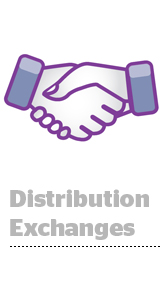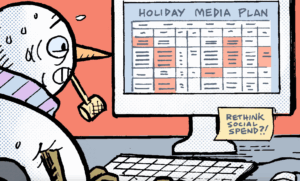 Publishers distributing their content on Facebook have discovered a way to buy traffic on Facebook – but it isn’t through amplifying their posts.
Publishers distributing their content on Facebook have discovered a way to buy traffic on Facebook – but it isn’t through amplifying their posts.
Instead, publishers place their content on Facebook pages that already have millions of engaged followers, such as “I Love Halloween,” George Takei, Lil Wayne or (perplexingly) “Music for Deep Meditation,” giving it huge organic reach. Via a tagged link, publishers pay a CPM for the traffic that results from the posts.
Some call it audience development. Others call the players Facebook arbitrage networks. But everyone acknowledges that it’s a powerful way for publishers to reach audiences.
Distributing content via Facebook pages has helped many a viral publisher gain audience quickly before using that audience to make a grab for legitimacy.
LittleThings.com, a publisher with feel-good content, for example, deployed this strategy to great success. It became the third-most shared publisher on Facebook and grew to over 40 million monthly uniques in a year. Elite Daily, APlus, Distractify, Tickld, FamilyShare and CafeMom also have used groups to distribute their content.
The owners of Facebook pages where these links are posted have stumbled on a gold mine. They can earn anywhere from four to six figures a month, according to Ken Wohl, founder of Cybrid Media, which connects publishers to page owners, who he calls “social influencers.”
But as a marketplace emerges to buy and sell links to content on Facebook, along with technology to match links with influencers, it’s still the Wild West. Although best practices are emerging, so has shady behavior such as buying and selling pages, which is illegal under Facebook’s terms of use.
Technically, the whole practice skirts Facebook’s rules. A Facebook spokesperson pointed to page guidelines that prohibit third-party advertisements on pages without its permission. But unless the platform spots something obvious or egregious, Facebook doesn’t enforce that rule.
Those involved are more concerned about falling on the wrong side of Facebook’s algorithm. Unlike humans unevenly enforcing guidelines, the algorithm is an omnipresent force. Publishers and page owners must always follow the algorithm’s commandment, which rewards engagement, or face diminishing reach.
How It Started
Internet origin tales can be fuzzy, but many people agree: George Takei got there first. The former “Star Trek” star posts dozens of links a day to sites like Distractify.com, Pixable.com, Dose.com and Brommando.com, each with cute original quips. The posts attract up to tens of thousands of “likes” and “shares.”
Takei is now the tentpole client of The Social Edge, a company founded to replicate Takei’s success. It specializes in matching influencers who own powerful Facebook pages to publishers seeking larger distribution for their content. Started just over two years ago, it now employs 35 people.
“It was the tail that started wagging the dog,” founder and CEO Lorenzo Thione said of The Social Edge’s origin. “We didn’t have any other vision than to help him connect with his audience.”
A former tech founder who sold a company to Microsoft, Thione is also a Broadway producer who will launch Takei’s musical, “Allegiance,” next month. He met Takei seven years ago and started working with the actor to improve his social media presence. A best practice at the time was to post others’ content as well as your own, so Takei started posting funny links he would find around the Internet.
Two years ago, Thione spotted an opportunity. Facebook changed its algorithms, which he said led to a “bifurcation in how content was reaching fans.” It wasn’t enough to have a lot of followers. One also had to have engagement. That “led to a decay of a number of social media presences and a blooming for others.”
Takei was one of those bloomers. With a hugely engaged audience and millions of fans, he could get organic distribution far greater than other pages with the same amount of fans.
Enter the publishers, which wanted access to his reach.
Optimizing For Engagement
Exchanging links for payment began informally, with handshake relationships and referrals via word of mouth.
But at least two companies, The Social Edge and Cybrid Media, built technology to replace handshake deals and address two key pain points. First, they needed to match the best content with the best influencer. Second, they needed a way to predict what would go viral. That meant setting up tests with different headlines, images and target audiences to determine what would go viral once placed on a top-tier page like Takei’s.
LittleThings, which often works directly with page owners, built this technology itself. The company spends $1 million a quarter with Facebook, said CEO Joe Speiser. That goes toward testing headlines and images with lookalike audiences to figure out what content will go viral once it hits the big arena: its own Facebook pages and those of its partners.
“Every piece of content we produce and curate gets tested through our algorithm, where we make sure it hits a certain level” of engagement, Speiser said. “If it hits that, then we share it, but not before. A lot of publishers can’t do that, because they can’t afford it.”
Posts with low engagement “pollute” the entire page, Speiser said. If a page owner seeks dollars over true engagement, for example, it will see a corresponding falloff in organic reach. “It’s about the balance for an influencer’s page,” Wohl said, speaking of Cybrid Media’s approach.
Done right, relevant posts will actually boost the organic engagement of a page. Cybrid Media and The Social Edge endeavor to turn around dormant pages. Adding paid but relevant publisher links to a page with millions of followers can spark an increase in organic reach and help reactivate the audience.
But small, active pages can also be good homes for publisher dollars. Because of Facebook’s algorithm, “large pages with 40 million fans can have the same reach as one with 400,000 fans,” Speiser observed. “It’s quality vs. quantity.”
LittleThings will often create custom content for pages “if it’s large and interesting enough,” Speiser said. It’s worked with recipe pages or nail polish fan pages, for example.
Since LittleThings’ content improves engagement on fan pages, it will sometimes strike deals where no money changes hands. Improved engagement is the currency.
“Because we’re so good at viral, they get a piece that would outperform anything they do on their fan page,” Speiser said. “The next time they go post, Facebook determines they create really engaging content, and makes the reach higher.”
This strategy trades on an obvious but little-used insight about Facebook. Microgroups – like the one about nail polish – often outperform broadly focused pages, where followers have more diverse interests. Publishers can tailor the content to the interests of the group, boosting click-through rates and increasing the page’s organic reach.
Many publishers use this strategy not only with partner pages, but their own pages. CafeMom’s pages include “Babies,” “I Love Being A Mom” and “I’m Pregnant,” with relevant content posted in each channel.
FamilyShare.com, which posts shareable stories about family, owns 80 Facebook pages reaching 100 million followers, including “I Love My Family” and “I Love Being A Grandma.” Its parent company, Deseret Digital Media, acquired the bundle of pages three years ago. The purchase complied with Facebook guidelines because the pages were just one element in the media properties it acquired, although they’ve ended up having outsize value.
Having owned pages has been “crucial to our success and a core part of our strategy,” Deseret Digital Media President Chris Lee said. They drive traffic to FamilyShare and serve as an important distribution channel for branded content. Brands, like publishers, have determined that it’s more effective to reach audiences by renting out other audiences than using their own.
“We’ve created these specific channels – you can call them affinity pages – that tap into the passion areas in their lives,” Lee said.
Engagement naturally follows a Facebook user’s passions and affinities.
It’s Here, But Is It Good Or Bad?
The publishers and companies involved in this practice describe it as a virtuous cycle. Engaging posts satisfy followers and boost audience, making the next paid post even more successful for the page and the publisher. Facebook’s algorithm polices this virtuous cycle, ensuring that posts that fit more in the pay-for-play category hurt the page posting them.
Users who subscribe to Takei’s or Lil Wayne’s pages see only a smattering of posts in their feed. The pages themselves can look cluttered, with dozens of posts from viral publishers.
But it’s not an arbitrage business, The Social Edge CEO Thione said.
“It’s not about sweetening your margin,” he said. “It’s a real marketing approach.”
Cost can preclude use as an arbitrage channel, and some influencers are expensive to work with. When they post content, it’s an endorsement for the publishing brand, and publishers must pay for that halo effect. Even if other pages are cheap, Speiser doesn’t see arbitrage as a sustainable business for any publisher involved, his company included. LittleThings is more focused on putting its content in front of audiences it think will respond to the content and keep coming back.
“Like any arbitrage [model], they get squeezed really quickly,” he said. “Over time it disappears, and it’s not enough to make it interesting.”
Publishers will look at cost per visit, but others also view the practice as audience development.
The ones we’re working with are trying to build a long-term strategy,” Wohl said. “They aren’t about a visit at a certain rate, but about building a credible brand.”
Whether it’s for audience development or arbitrage, the practice does run afoul of Facebook’s official rules. It also falls into the same gray area as influencer marketing, which has flourished notwithstanding social networks’ official guidelines or the FTC, which requires labeling when money changes hands.
And as long as some people in social networks have outsized reach, they’re likely to be in demand from publishers and brands seeking access to those audiences.












